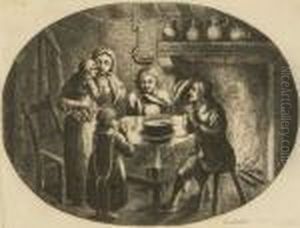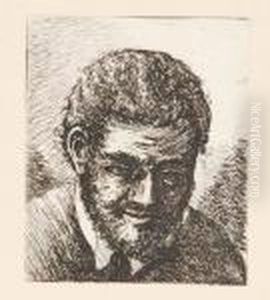David Deuchar Paintings
David Deuchar was a notable Scottish engraver, born in 1743 in Edinburgh. He came from a family of prosperous merchants and was expected to follow in his family's footsteps. However, Deuchar developed a passion for art at an early age, particularly for engraving, which was a popular and respected form of printmaking during the 18th century.
Deuchar's career as an engraver began under the tutelage of Sir Robert Strange, a prominent Scottish engraver of the time, who was famous for his Jacobite sympathies. Under Strange's guidance, Deuchar honed his skills in the art of line engraving, which involves incising a design onto a hard surface by cutting grooves into it. This method was traditionally used for reproducing images, such as paintings or drawings. Deuchar's engravings were known for their delicacy and precision, qualities that made his work sought after by collectors and connoisseurs.
While Deuchar never achieved the fame of his mentor, his work was respected in his own right. He is best known for his series of engravings based on the paintings of Dutch and Flemish masters such as Rembrandt, as well as his engravings of ancient gems. The latter was a project that showcased his talent for capturing intricate details and was well received by the artistic community. Deuchar was also involved in local cultural circles and was a member of the Edinburgh Calotype Club, one of the earliest photographic societies in the world.
Deuchar lived and worked in Edinburgh all his life, remaining relatively obscure outside of Scotland. He died in 1808, but his contribution to the art of engraving was recognized posthumously. His engravings continue to be appreciated by art historians and collectors for their technical skill and artistry. While not a household name, David Deuchar's work remains a significant part of the history of Scottish art and engraving.

